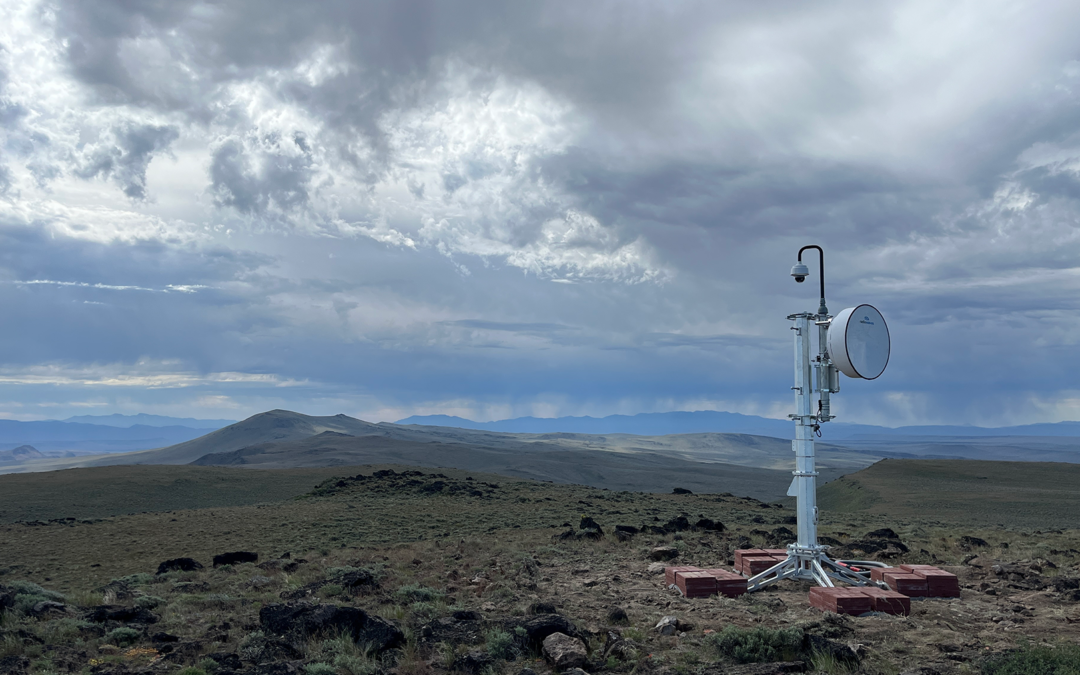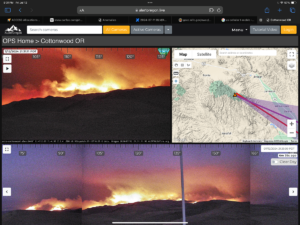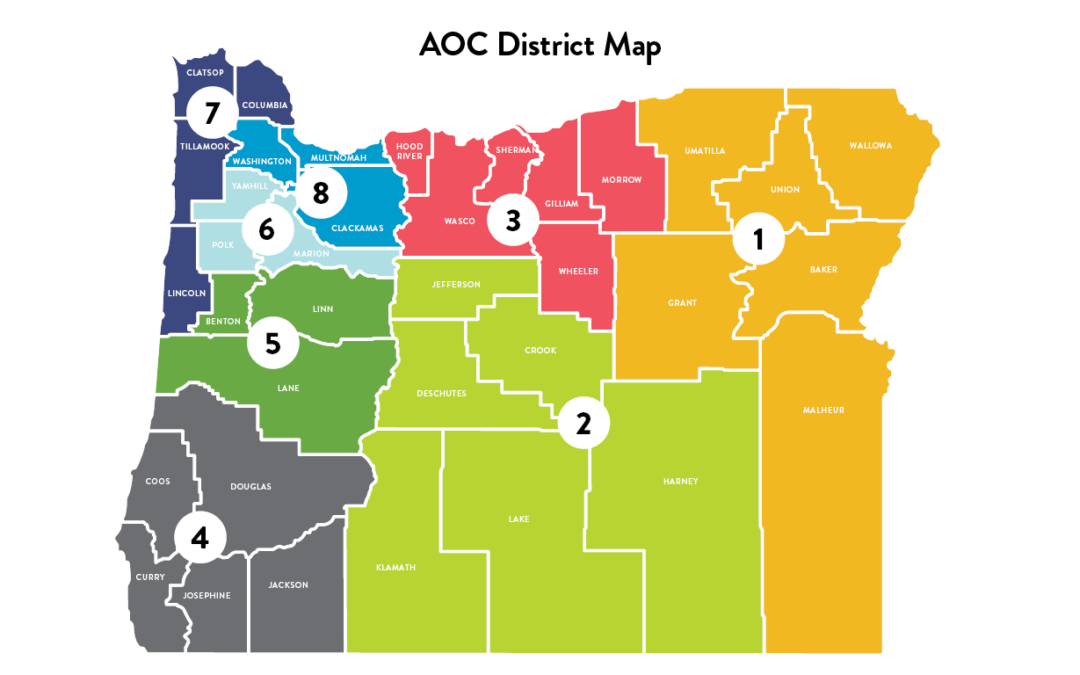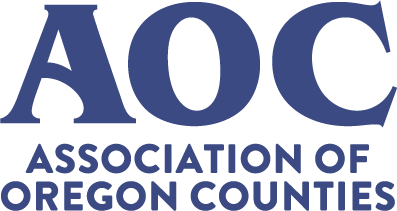
Oct 30, 2024 | AOC Advocacy, Transportation
Until the passage of Senate Bill 1566 during the 2024 short session, Oregon law prohibited counties from charging fees for permits issued to water, gas, electric, and communications utilities for construction, repair, or maintenance work in the county right of way. The statutory preemption on permit fees meant that precious State Highway Fund dollars intended for county road improvements and maintenance were instead subsidizing public and private utility operations.
SB 1566 removed the preemption and allows counties to charge cost-recovery fees for permits issued to the utilities that could previously operate in the county right of way free of charge. This month, Multnomah County became the first to pass an ordinance to implement the bill and begin to recover the costs incurred by utility permit review and administration.
Multnomah County’s ordinance updates Multnomah County Code Chapter 29 Building Regulations to include a code section § 29.503(E) which states that the Director can set fees consistent with SB 1566 (2024). While this is a small change to the code, it effectively removes the preemption against charging utilities. Now that the preemption is removed Multnomah County can apply the fee structure it already has in place. SB 1566 allows Counties to charge on Jan. 1, 2025. However, Multnomah County plans to begin charging permit fees on July 1, 2025. Between now and then the Transportation Development program (which is responsible for permitting) will be updating their permit forms, doing some outreach to the utility companies and their contractors, and updating the online permit portal to make it easier for utility companies and their contractors to both apply and pay the fee.
Negotiated language in SB 1566 includes a fee cap, permit fee exemptions for vegetation management, routine maintenance, and emergencies, and requires that completed fee-eligible permits must be approved or denied by the county within 15 business days. SB 1566 sunsets in 2031, so the legislature will have to review and renew the authority it provides to counties in a future session.
SB 1566 contains language that allows a county to begin ordinance development now, with operative date no earlier than Jan. 1, 2025. The Association of Oregon Counties (AOC) encourages county boards of commissioners and county courts to work with county road departments and county counsels, and consider adopting an ordinance.
Submitted by: Mallorie Roberts | Legislative Affairs Director

Oct 30, 2024 | Governance, Revenue, & Economic Development
The Oregon Department of Emergency Management (OEM) has worked collaboratively with public and private organizations since May to present the global 2024 Public-Private Partnership Security and Resilience Seminar Series.
This series includes subject matter experts from industry, academia, and government sectors, sharing critical infrastructure best practices, valuable lessons learned, and include introduction of preparedness resources and tools that can be used by organizations to reduce risk and increase resilience. The 4-part series addresses a wide array of topics including an introduction to violence prevention, addresses the impacts of houselessness, and offers two seminars focusing on the rapidly growing field of artificial intelligence. The full series has been open to business, industry, state, local, and federal participants from around the world.
The Association of Oregon Counties (AOC) knows that with the prevalence of artificial intelligence, counties want to know how they can be intentional and proactive. The last two sessions of this series are both 90 minutes long and explore the challenges, hidden dangers, and managerial risks associated with integrating AI, emphasizing the importance of ethical, secure, and effective implementation, and will feature insights from experts in government and the private sector to help seminar attendees explore strategies and considerations for harnessing AI’s power responsibly within organizational settings.
You can view recordings of all four sessions of the Public-Private Partnership Security and Resilience Seminar Series virtually through the following link by clicking here.
Individual Session Links:
Sponsored by Idaho Office of Emergency Management (IOEM), this series is a collaborative effort with the Oregon Department of Emergency Management (OEM), the Cybersecurity and Infrastructure Security Agency (CISA), and Albertsons Companies. It involves volunteer speakers with firsthand experience in key business and industry security and resilience topics.
Contributed by: Miles Palacios | Legislative Affairs Manager

Oct 29, 2024 | AOC Business Partner
(Pictured above: Acty Mountain camera in Harney County. Each camera can rotate 360 degrees, tilt 220 degrees, and zoom up to 40 times. With near-infrared capabilities, they have a range of up to 30 miles in the day and 40 miles at night.)
Sponsored content contributed by AOC Business Partner: University of Oregon
The frequency and severity of wildfires are rising, driven by climate change, decades of fire suppression, and growth in the wildland-urban interface. But a lab at the University of Oregon has deployed a wildfire intelligence platform that gives counties new tools to spot and track wildfires.
The Oregon Hazards Lab at the University of Oregon (OHAZ) is now part of the world’s largest network of public wildfire cameras. OHAZ has installed dozens of cameras on telecommunications and lookout towers with long-range, 360-degree views of the surrounding landscape. Together, they enable firefighters to discover new ignitions, receive visual information to inform suppression efforts, and monitor fire behavior through containment while keeping people out of harm’s way.
OHAZ has been able to rapidly grow its wildfire camera network thanks to funding by the Oregon State Legislature, the Bureau of Land Management, the U.S. Forest Service, the Federal Emergency Management Agency, public utilities, and local partners. There are currently 57 cameras in Oregon, with plans to deploy 75 cameras by the end of 2025 and hundreds more in future years.
In addition, U.S. Senators Ron Wyden and Jeff Merkley directed funds this year to OHAZ to implement recommendations of the Oregon Wildfire Detection Camera Interoperability Committee. The committee is co-chaired by OHAZ and the Oregon Department of Forestry and aims to increase cooperation between agencies in detection camera efforts.
View Wildfire Cameras on the ALERTWest Platform
Any member of the public can view live and timelapse camera footage by visiting ALERTWest.live. This platform displays over 1,200 cameras operated by OHAZ and universities in other western states. In August 2024 alone, more than 12,000 unique users watched Oregon’s wildfire cameras, showing the impact that these tools can have on public safety and situational awareness during fire season.
Emergency managers, firefighters, and other stakeholders with public safety needs can receive login credentials to ALERTWest that allow them to rotate, tilt, and zoom the cameras to monitor specific wildfires. Credentialed users can also receive automated alerts when a new ignition is detected in their region. Over 200 officials from more than 50 different agencies in Oregon currently have camera credentials, including county governments; local utilities, police departments, and fire departments; and land management agencies.

The Cottonwood camera enabled firefighters to monitor the Cow Valley Fire in July 2024. Every two minutes, ALERTWest software takes a panoramic image from each camera and scans the images for new ignitions using wildfire detection algorithms. ALERTWest employees confirm detection validity and then deliver alerts to credentialed users.
County Partnerships Bolster Community Resilience
County partnerships are at the heart of OHAZ’s success. More than simply using login credentials to watch for fires, county governments are integral to the camera network’s expansion and operation. They are crucial partners in hosting camera sites and providing access to the power and telemetry needed to keep cameras operating 24/7. These collaborations reflect the shared commitment of OHAZ and Oregon’s counties to safeguard rural and urban communities alike from the increasing threats posed by wildfire and other hazards. To date, OHAZ has deployed cameras in 19 of Oregon’s 36 counties, which have been valuable resources for monitoring the conflagrations that burned 1.9 million acres across the state in 2024.
OHAZ’s role does not stop with wildfire monitoring. It has also been a key player in Oregon’s efforts to prepare for earthquakes for a decade. The lab continues its work to expand the Pacific Northwest Seismic Network (PNSN) and strengthen the ShakeAlert Earthquake Early Warning System, which provides precious seconds of warning before dangerous seismic shaking arrives, giving counties the opportunity to protect residents and infrastructure from catastrophic damage.
OHAZ is working to secure additional funding to continue and expand its critical work. Counties interested in supporting OHAZ’s efforts at the state and federal level are encouraged to reach out to Joe Erickson at jerickson@uoregon.edu for more information on how they can help advocate for this critical resource.
OHAZ Wants to Work with Your Community
Emergency managers, firefighters, and other individuals with a public safety mission can email wildfirehelp@uoregon.edu to receive control and alerting credentials for Oregon cameras. Local governments can also email the lab to learn more about hosting camera sites in their county and to receive outreach materials for their residents. Together, we will be ready for next fire season, with an eye in the sky from the High Desert to the Cascade Range, from the forests to your town.
The Oregon Hazards Lab is a hazard monitoring group within the University of Oregon’s Department of Earth Sciences. OHAZ is developing a regional sensor network for understanding, detecting, and mitigating multi-hazards in the Pacific Northwest. The data collected by its instruments advance knowledge of natural disasters and the environment, protect the public through real-time alerting, and contribute to community-level resilience.

Oct 29, 2024 | AOC News
The Association of Oregon Counties (AOC) wrapped up its 2024 district meetings in Curry County on Friday, Oct. 11, following a month-long tour across Oregon that began in Washington County in September.
These in-person meetings are held every fall in AOC’s eight regional districts and are hosted by a member county within each district. District leaders, who serve on AOC’s Board of Directors and legislative committees, play a key role in ensuring regional representation in the major organizational decisions and policy positions for the association.
“AOC extends its gratitude to the member counties that hosted us this year, as well as to all the members, affiliate organizations, and partners who joined us,” said Executive Director Gina Nikkel. “Our organization is stronger when everyone participates, enabling us to achieve even better outcomes for our counties and communities.”
At the 2024 district meetings, Nikkel presented an in-depth overview of the proposed budget for the upcoming year and reviewed proposed AOC bylaws amendments. Both items will be considered for adoption by the full membership at the AOC Annual Business Meeting during the 2024 Annual Conference in November. These meetings also provide an opportunity for AOC staff and district chairs to gather feedback, which is shared with the AOC Board of Directors. The Board then makes recommendations on both the budget and bylaw amendments to the full membership.
AOC department directors also joined district meetings this year, providing updates on key accomplishments and outcomes for AOC member counties.
- AOC Member Services Director Kristen Paul celebrated the hard work and dedication of the AOC membership committee, highlighting their significant contributions in the growth of the partner program and in charting a long-term path and opportunities for the program to continue to support AOC’s membership.
- AOC County Road Program Director Brian Worley previewed the 2024 County Road Needs Study and discussed advocacy efforts in preparation for the upcoming negotiations on the transportation package during the 2025 legislative session.
- AOC Legislative Affairs Director Mallorie Roberts reviewed the department’s successful advancement of AOC policy priorities during the 2024 legislative session and presented the AOC’s 2025 Policy Priority Platform.
In addition to AOC business and information, district meetings hold time for a “hot-topics” discussion on key issues facing the region’s counties. This year the major themes discussed at district meetings included public safety and health (particularly opioid and deflection programs); infrastructure and energy development; property tax issues; and workforce challenges. These topics reflect common priorities across multiple regions, with local variations based on regional needs.
Meeting information, recordings, and materials can be found here.
Contributed by: Erin Good | Communications Coordinator

Oct 29, 2024 | AOC Business Partner
Sponsored content contributed by AOC Business Partner: NW Natural
Winter is just around the corner, and as safety is one of NW Natural’s core values, we’re always looking ahead. That’s why we want to share the resources that are available to help keep NW Natural customers warm and safe this winter. We encourage you to share these resources with your constituents. You are welcome to copy and paste the resources below into any newsletter or communication you have with constituents in NW Natural’s service territory.* And please reach out if you have any questions.
Below NW Natural has shared three great resources available to customers to prepare for winter. If you are looking for any support, don’t hesitate to reach out to them.
Bill Discount Program
NW Natural’s Oregon Bill Discount Program can save income-eligible customers money every month on their gas bill. Depending on their income level, bill discounts can range from 15% to 80%+. To date, NW Natural has enrolled nearly 50,000 customers — helping to lower household energy bills in Oregon.
The application takes only minutes to complete online, by email, traditional mail, or over the phone. Proof of income is not required to apply. If you are interested in applying or learning more, you can find more information here, or call 503-226-4211 with any questions.
Winter weatherization kits
Weatherizing your home can help immensely with energy savings. And while home upgrades can be expensive, there are some quick, easy improvements you can make. We’ve assembled some of the top winter weatherization items into DIY kits that are available to NW Natural customers. These kits often include:
- Rope caulk
- Door sweep
- Outlet sealers
- Window insulation
- Weatherstripping tape
- Power bank
If you’re curious about getting a weatherization kit, you can reach out to us here. And, to be even better prepared this winter, click here to learn more about how your natural gas appliances can work in a power outage.
Winter Preparedness Fair
NW Natural will be hosting a Winter Preparedness Fair in partnership with The Community Services Network and City of Portland’s Bureau of Planning and Sustainability. The fair will be a family-friendly event where you can get more tips to prepare for winter weather, access to bill assistance programs, and learn about utility resource planning. Find access to nonprofit resources, healthcare signup, family activities, free lunch, winter coats, food boxes, home weatherization kits, energy education, bill discount opportunities, vaccinations and more. Food and more provided — bring the whole family!
Details
What: Winter Preparedness Fair
When: Saturday, November 16, 11:00 AM-2:00 PM
Where: Parkrose High School, Portland
For more information, visit the Winter Preparedness Fair website.
*NW Natural works in the following Oregon counties: Benton, Clackamas, Clatsop, Columbia, Coos, Douglas, Hood River, Lane, Lincoln, Linn, Marion, Multnomah, Polk, Tillamook, Wasco, Washington, and Yamhill.






